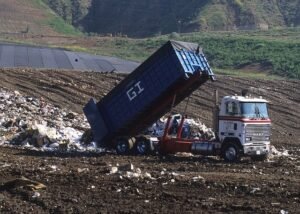The environment of The Outer Space: The existing binding code of conduct to preserve access to earth orbits.
Written By: Dhimaan Dutta
The Back Story-A brief
When the 67th United Nations General Assembly met in New York in October to debate the peaceful use of space, the European Union began talks with governments to urge them to sign a new International Code of Conduct for Outer Space Activities. The proposal, which is an updated version of the 2008 standards, lays out rules for nations that launch space missions. In 2007, China performed an anti-satellite test to destroy their obsolete weather satellite, demonstrating the necessity for such rules. In the 1980s, the US and Russia performed similar testing. Experts warned that in the future, countries may strike one other’s satellites.
The US Department of Defense estimates that there are 22,000 objects in orbit, with 1,100 of them being operational satellites. Current space laws, which are made up of a few legally binding and non-legally binding accords, are insufficient to address issues like debris and space weaponization. By 2013, the EU expects that all major states will have signed the agreement. But are they ready to do so?
An International Code of Conduct for Outer Space Activities, which owes its origins to an EU project, has been undergoing international discussions for the last four years. The original text has undergone numerous revisions in order to get more acceptability among the world’s governments. The most current draught, ‘Version 16 September 2013′, which resulted from the Open-Ended Consultations conducted in Kiev, Ukraine in May 2013, marks significant progress in gaining international acceptance, although it still lacks the full backing of several major space actors.
The fact that the code is accessible to all states to subscribe to but not legally binding is a crucial feature that has helped it get support from some of its most ardent proponents. Nonetheless, the code represents a substantial attempt to encourage the responsible use of space for the common good while upholding the idea of everyone having equal access to space. While the code attempts to improve the safety, security, and long-term viability of Outer Space operations, it is unclear if it will be sufficient to achieve these goals in their entirety.
In a previous debate on the issue, it was suggested that the code should meet the following principles in order to serve as a stepping stone for future development of international law pertaining to Outer Space:
- Consistently strengthen and develop the equitable concept of freedom of activities in outer space, as established in relevant UN treaties; this would basically align the code with current laws and legal principles.
- Support norms that prevent interfering with one another and causing disputes, while respecting existing international organisations.
- Set limitations on activities in space that have negative repercussions and harm the environment.
Outer Space’s numerous aspects and a code of conduct
Space has grown increasingly crowded, disputed, and competitive in the last 50 years, and it is fueling the expectations of every generation. More than ten countries have space launch capabilities, and over fifty-odd countries own and manage over 1,000 operational satellites, demonstrating how space is increasingly playing a direct part in our lives. As a result, the increasing volume of space trash is an obvious motivator for some type of “self-regulation” and, as a result, for international debates on the code.
The goals and circumstances for achieving progress in regulating outer space operations, mobilizing the incentive for reinvigorated ethics of humanity’s future steps of space exploration, and preventing severe risks to outer space’s continued positive function have been stated time and time again. Progress on future advancements in international space law has been severely hampered in recent decades, despite the fact that changes in the environment and new difficulties in outer space have necessitated fresh breakthroughs in international space law.
This resulted in inconsistent legislative and legal changes in many nations across the world, exacerbating space security issues. More crucially, progress in the Conference on Disarmament has stalled on a number of problems, including preventing an arms race in space and preventing the weaponization of space, both of which represent a danger to world peace and security.
The need for legal advances in areas such as extraterrestrial resource extraction, liability regimes, and risk mitigation measures, international private sector collaboration, and the establishment of national space legislation remains.
The code of conduct is a positive step forward, but it must cover the three primary aspects of outer space, namely,
- The cooperative environment
- a competitive space
- a security space.
- The code’s non-binding character and voluntary subscription are a broad brush treatment that is insufficient and would underserve good solutions to issues, notably in the areas of “competition space” and “security space.”
Orbital Debris: Safety and Access to Space Resources
Debris poses a threat to both the Earth and the universe. Debris jeopardizes both present and future space operations in terms of access to space and space resources. According to NASA, most space debris can travel at speeds of 8,046.72 meters per second (almost 7 times faster than a bullet), which is fast enough for even a small piece of orbital junk to do catastrophic damage to a spacecraft or satellite. Every day, the vast majority of the world’s population relies on satellite technology and applications. Satellites are used for a variety of purposes, including communications, photography, and mapping, remote sensing, and Geographic Information Systems (which are necessary for geographical research), weather forecasting, GPS, and the defense sector.
When space debris accumulates, it poses a serious threat not just to these satellites’ orbital trajectories, but also to their operating range, due to the possibility of collisions. Debris also has an impact on the safety of astronauts in space. Every day, the idea of a larger human presence in space becomes increasingly feasible. Tourism missions to space are being planned by several organizations. Both SpaceX and Virgin Galactic, for example, want to launch private passenger flights to space in the early 2020s. Furthermore, existing human missions, such as the International Space Station (ISS), are always thought to be vulnerable to debris. The ISS has conducted three collision avoidance maneuvers in 2020 alone, according to NASA.
Aside from the impacts of space debris, there is also a direct threat to Earth. Large objects from space can re-enter the atmosphere without completely burning up, resulting in nuclear contamination of the Earth’s surface. This risk was highlighted in 1978 when a Soviet spacecraft crashed to Earth, spreading radioactive particles over northern Canada, necessitating major cleaning. There have been previous cases of debris landing on Earth. Three separate locations in South Africa suffered space debris impacts on April 27, 2000.
A Chinese rocket plummeting down to Earth uncontrolled on May 13, 2020, may have dumped debris in two neighboring Ivorian communities. These occurrences make us think about where the next debris drop will occur, such as on someone’s roof or in a field of playing children. In view of the aforementioned dangers, there is little question that something must be done.
Issues that still needs some recognition
Aside from the legal problems of SDR, other factors will play a role in determining the feasibility of remediation. They include a method for overcoming the budgetary barrier to SDR, as well as a method for taking into account the strategic, security, and military elements of on-orbit service and active debris removal. As a result, an appropriate form of international collaboration, as well as an organizational framework, will be needed.
Following practical circumstances, as needed was one of the outcomes of the International Congress on Space Debris Remediation.
- a proper legal and policy framework to protect the parties involved and address “alternative use” concerns
- available and willing targets for removal or customers for servicing
- funding: for the time being, for establishing, testing, and developing technologies and SDR techniques, in the future—for carrying out such operations
In terms of providing economic incentives for debris collection, a concept has been offered of creating a worldwide fund to which all operators should contribute on an equitable basis. Other operations taking place in global commons, such as telecommunications utilizing fiber optics on the high seas, have adopted this strategy. The major advantage of this method is that it distributes financial burdens among several companies. The reason for this strategy is that outer space activities are, by definition, extremely dangerous and expensive, making risk distribution more practical and effective than imposing fees on single companies.
Furthermore, while these difficulties may not be directly related to the law, they might be aided by proper regulation.
Conclusion
Space debris is a pressing concern and a global hazard for space operations. While the conflict between the use and protection of outer space, which has resulted in current trends of exponential and irreversible growth of space debris, is a serious issue, the legal response to date has been ineffective in terms of establishing binding rules for space debris mitigation and remediation. True, a solution to such a complicated problem cannot be developed just through regulatory means; it also needs technological, financial, and political methods that, when combined with an appropriate legal framework, can reflect the dimensions of orbital space junk contamination.
The problem’s seriousness cannot be overstated, and immediate action is essential for the utilization of near-Earth space. Nonbinding policies and initiatives can play a significant role in space debris reduction, even if the law lags behind technical advancement. They can also serve as a foundation for the formation of binding laws. This pattern holds true for space debris cleanup, which must be incorporated into the legal framework for extraterrestrial operations. The challenges for remediation appear to be at least as numerous as those for mitigation, but given the urgency of ensuring that the long-term use of space is not hampered irreversibly, the development of appropriate SDR mechanisms at the international and national levels should not be delayed, as they will define the future of the outer space environment and the viability of space activities.
Previous Posts
Legal Issues faced by Startups in India
Divorce and Gender Justice in India
Domain Name Disputes in cyberspace: An analysis of the issues involved
Assessment of Compensation to Road Accidents Victims
Keywords
The Environment of The Outer Space, Outer Space, environment, The Outer Space environment




